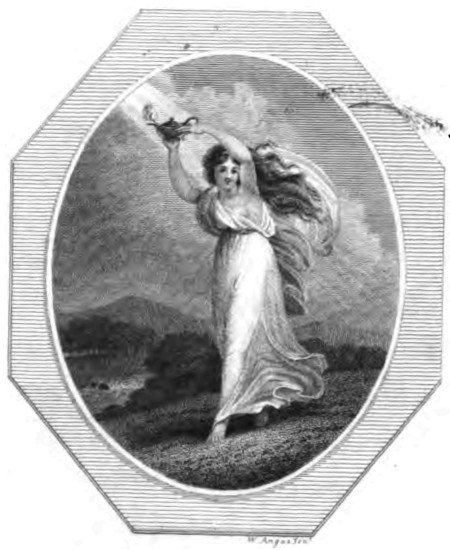ORIGINAL SONNETS,&c.
BYANNA SEWARD.
PRICE SIX SHILLINGS AND SIXPENCE.
Entered at Stationers hall.[Pg i]
ORIGINAL SONNETS
ON VARIOUS SUBJECTS;
AND
ODES
PARAPHRASED FROM HORACE:
BY
ANNA SEWARD.

“Come, bright Imagination come, relume
Thy orient lamp.”
See Sonnet 1
LONDON:
PRINTED FOR G. SAEL, NO. 192, STRAND; AND SOLD BY MR. SWINNEY,BIRMINGHAM, AND MR. MORGAN, LICHFIELD.
PREFACE.
Whatever other excellence may be wanting in the ensuingPoems, they are, with only nine exceptions out of the hundred,strictly Sonnets. Those nine vary only from the rules of thelegitimate Sonnet in that they rhime three, instead of four timesin the first part. The pause is in them, as in the rest, variouslyplaced through the course of the verses; and thus they bear nomore resemblance than their associates, to those minute Elegies oftwelve alternate rhimes, closing with a couplet, which assume thename of Sonnet, without any other resemblance to that order ofVerse, except their limitation to fourteen lines. I never found thequadruple rhimes injurious to the general expression of the sense,but in the excepted instances. When it is considered how fewthey are in so large a number, I flatter myself the idea will vanishthat our language is not capable of doing justice to the regularSonnet.
From the Supplement to the Gentleman's Magazine for 1786,I shall insert Mr. White's definition of the nature and perfection[Pg iv]of this species of Verse, because I think it explains them withjustness and precision.
“Little Elegies, consisting of four stanzas and a couplet, areno more Sonnets than they are Epic Poems. The Sonnet is ofa particular and arbitrary construction; it partakes of the natureof Blank Verse, by the lines running into each other atproper intervals. Each line of the first eight, rhimes fourtimes, and the order in which those rhimes should fall is decisive.For the ensuing six there is more licence; they may,or may not, at pleasure, close with a couplet.
“Of Milton's English Sonnets, only that to Oliver Cromwellends with a couplet, but the single instance is a sufficient precedent;however, in three out of his five Italian ones, theconcluding lines rhime to each other.
“The style of the Sonnet should be nervous, and, where thesubject will with propriety bear elevation, sublime; withwhich, simplicity of language is by no means incompatible.If the subject is familiar and domestic, the style should,though affectionate, be nervous; though plain, be energetic.The great models of perfection, for the sublime and domesticSonnet, are those of Milton's, ‘To the Soldier to spare hisDwelling-place,’ and ‘To Mr. Laurence.’[Pg v]
“The Sonnet is certainly the most difficult species of poeticcomposition; but difficulty, well subdued, is excellence.Mrs. Smith says she has been told that the regular Sonnetsuits not the nature or genius of our language. Surely thisassertion cannot